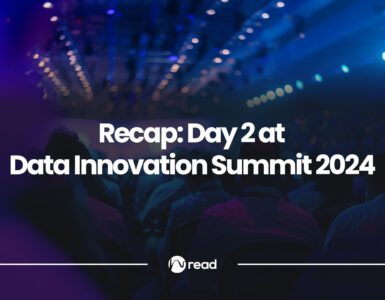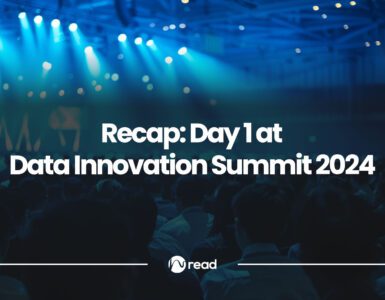HR analytics or people analytics is the data-driven analysis of the employees that help in discovering the changing trends and display insights that are useful for improvements in the organization. But, having so many types of data can make this process hard. No worries, artificial intelligence and automation have your back in collecting the meaningful data that is put to the right use by HR professionals. Different types of HR software store and analyse the data for you which saves your time.
In this blog, you will learn all about HR analytics. We will tell you where the data comes from, how it is converted to information and its use. The importance of HR analytics and its types will help you in choosing the best metrics that fit your organization’s needs.
HR analytics- an overview
HR analytics discovers common trends and patterns in HR functions and processes. These are displayed through statistics and graphs so it is easy to catch the changes. These stats can tell you about your employee turnover rate, absenteeism rate, time-per-hire, cost-per-hire, percentage of regretted loss, and much more. Are you wondering where the data come from? It is recorded in software that stores human data. For instance, your applicant tracking system records data about the number of resumes collected during a job opening and the time. This recorded data will help analyse the time to fill a vacancy. If it takes longer you can evaluate your processes and make improvements.
This is how different metrics help you create your analysis that can benefit you and your employees.
Trends changing the HR analytics
Trends change with time and so is the case with HR and its Analytics. Humans evolve and their behaviours change which requires HR to upgrade its policies and functions. There are some trends the year 2022 expects that call for changes in HR analytics.
A shift to remote work
Freelancing is one of the fastest-growing industries that gives flexibility in work schedules and choices of projects. Upwork found that 24% of employees would accept pay cuts in exchange for remote work. Moreover, 10 million Americans are considering full-time freelancing. This means organizations may not find or retain the right talent which leads to the next trend.
Upskilling of employees
HR analytics can tell you about the skill gap in your organization. 87% of employers report difficulty in filling the skill gap. This problem is inevitable with many talented employees leaving your company. To maintain your quality you require advanced training for the current employees who prefer job security.
Higher focus on employee well-being
With the outbreak of the pandemic, employees felt physical and mental burnout. To help the employee’s organizations set the trend of work-from-home. This trend changed the work systems forever. Now employees prefer staying home to avoid toxic work cultures, unnecessary human contact, and to stay fit. Moreover, employees’ work-life balance improves as they can use the lunch breaks with their families. With HR analytics you can observe increased productivity and efficiency through different metrics. So what are these metrics? We will discuss this next.
The metrics of HR analytics
HR analytics has many different dimensions. These dimensions are called metrics that lead to a formed analysis. There are three types of HR analytics:
- Descriptive HR analytics
They study the past data and tell how things worked or went wrong in the past. Current actions are taken to maintain positive performances or improve.
- Predictive HR analytics
The forecast future occurrences. Current actions are taken to improve the future.
- Prescriptive HR analytics
They study both past and future analytics to make recommendations about the next actions.
These analytics contain many metrics but the most useful for organizational performance management are as follows.
- Cost-per-hire
It is the cost your company bears to hire a new employee. According to a Glassdoor survey of 2019, on average $4000 was spent for each new hiring. In 2022, this is expected to increase adding to the difficulties of hiring the best talents.
- Time-per-hire
The time to recruit and hire a new employee is the time-per-hire. Glassdoor records an average of 24 days to hire a new employee in the US. More time is saved for other purposes when you hire the right candidate in less time.
- Regretted loss percentage
Regretted or regrettable loss is the percentage of good employees that left the company that you planned to retain. This metric in HR analytics tells a lot about your employee satisfaction and its dimensions.
- Absenteeism rate
As the name suggests, this metric records the rate of employees being absent from the office. This speaks volumes about employee engagement and motivation and helps in taking actions accordingly.
- Turnover rate
It is the rate at which the employees leave your organization during a specified time period. On average, a company loses 18% of the workforce every year. Employees leave for different reasons including better opportunities and retirement.
These metrics make up the HR analytics to create useful insights. These insights can then be used to make better decisions. For instance, a high turnover and absenteeism rate would have a link with employee satisfaction level. This could then relate to work-life balance issues, less employee feedback, poor leadership, no knowledge sharing, poor rewards, and recognition, etc.
Your actions such as paid annual leaves, 360 degree feedback, and mentoring sessions can be useful for employee management.
Summary of HR analytics
For your organization, HR analytics can prove to be a goldmine. Every problem has interlinked causes which are difficult to identify without proper evidence and data. Hence, HR analytics have a huge role to play in the prosperity of your employees and organization. Software like Applicant Tracking System, Human Resource Information System, and Recruitment Candidate Relationship Management, can track all the relevant data you need. Your single decision can win you future success. HR analytics give you direction so you just need to walk down the road. To each organization is their own HR analytics so do you and win over your competitors.
About the author
Jigna has been working with iSmartRecruit for so long. She is highly qualified in generating productive content and marketing the content. She has produced several content pieces that can make you understand the core problems of hiring professionals and recruiters and providing them with quite satisfying solutions through a recruiting technology called the Applicant Tracking System.
Read more related articles















Add comment